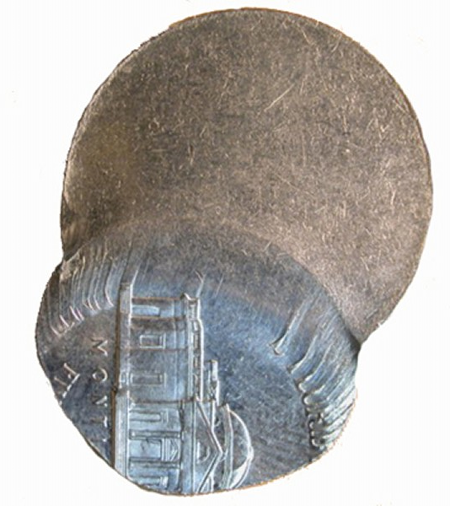Part VI. Striking Errors:
Excessive Striking Pressure:
Stretch Strikes (Die-Struck on Both Faces)
Definition: A stretch strike is an off-center strike with a very wide “slide zone”. Uniface strikes (coins struck against another planchet) often take the form of a stretch strike because the double thickness greatly increases effective striking pressure. Stretch strikes are rarer when only one planchet is involved.
A stretch strike that is die-struck on both faces owes its existence to an abnormally small minimum die clearance. Minimum die clearance refers to the minimum distance between the dies at their closest approach in the absence of a planchet. A stretch strike can also reflect elevated ram pressure, but this is hard to prove. Ram pressure is the tonnage delivered to a planchet of normal thickness. Elevated ram pressure without an accompanying reduction in minimum die clearance will not result in a stretch strike.
In addition to the wide slide zone, a stretch strike will also show exaggerated metal flow in peripheral design elements.


This undated off-center cent shown above displays an extreme stretch strike. Peripheral letters on the reverse face are no longer recognizable due to the exaggerated distortion.


The image above of an off-center nickel shows a well-developed stretch strike.

